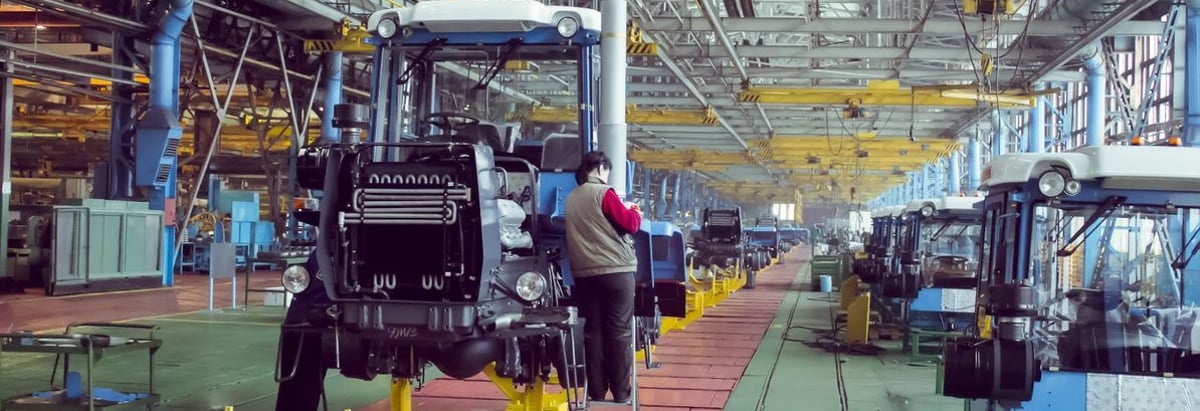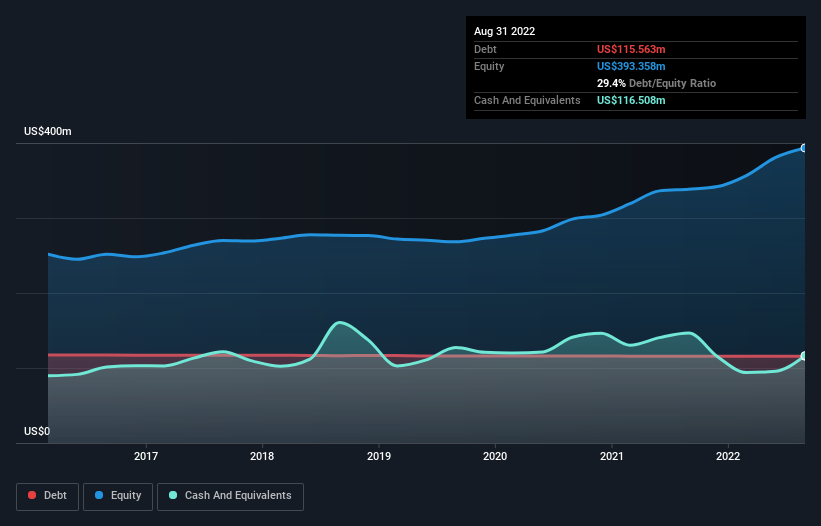- United States
- /
- Machinery
- /
- NYSE:LNN
These 4 Measures Indicate That Lindsay (NYSE:LNN) Is Using Debt Reasonably Well

Howard Marks put it nicely when he said that, rather than worrying about share price volatility, 'The possibility of permanent loss is the risk I worry about... and every practical investor I know worries about.' So it seems the smart money knows that debt - which is usually involved in bankruptcies - is a very important factor, when you assess how risky a company is. We note that Lindsay Corporation (NYSE:LNN) does have debt on its balance sheet. But the real question is whether this debt is making the company risky.
When Is Debt Dangerous?
Debt assists a business until the business has trouble paying it off, either with new capital or with free cash flow. In the worst case scenario, a company can go bankrupt if it cannot pay its creditors. However, a more frequent (but still costly) occurrence is where a company must issue shares at bargain-basement prices, permanently diluting shareholders, just to shore up its balance sheet. Of course, the upside of debt is that it often represents cheap capital, especially when it replaces dilution in a company with the ability to reinvest at high rates of return. When we think about a company's use of debt, we first look at cash and debt together.
Check out our latest analysis for Lindsay
How Much Debt Does Lindsay Carry?
As you can see below, Lindsay had US$115.6m of debt, at August 2022, which is about the same as the year before. You can click the chart for greater detail. But on the other hand it also has US$116.5m in cash, leading to a US$945.0k net cash position.

How Strong Is Lindsay's Balance Sheet?
We can see from the most recent balance sheet that Lindsay had liabilities of US$160.9m falling due within a year, and liabilities of US$156.4m due beyond that. Offsetting this, it had US$116.5m in cash and US$139.1m in receivables that were due within 12 months. So it has liabilities totalling US$61.7m more than its cash and near-term receivables, combined.
Since publicly traded Lindsay shares are worth a total of US$1.82b, it seems unlikely that this level of liabilities would be a major threat. Having said that, it's clear that we should continue to monitor its balance sheet, lest it change for the worse. While it does have liabilities worth noting, Lindsay also has more cash than debt, so we're pretty confident it can manage its debt safely.
On top of that, Lindsay grew its EBIT by 74% over the last twelve months, and that growth will make it easier to handle its debt. There's no doubt that we learn most about debt from the balance sheet. But it is future earnings, more than anything, that will determine Lindsay's ability to maintain a healthy balance sheet going forward. So if you want to see what the professionals think, you might find this free report on analyst profit forecasts to be interesting.
But our final consideration is also important, because a company cannot pay debt with paper profits; it needs cold hard cash. While Lindsay has net cash on its balance sheet, it's still worth taking a look at its ability to convert earnings before interest and tax (EBIT) to free cash flow, to help us understand how quickly it is building (or eroding) that cash balance. In the last three years, Lindsay created free cash flow amounting to 14% of its EBIT, an uninspiring performance. That limp level of cash conversion undermines its ability to manage and pay down debt.
Summing Up
We could understand if investors are concerned about Lindsay's liabilities, but we can be reassured by the fact it has has net cash of US$945.0k. And we liked the look of last year's 74% year-on-year EBIT growth. So is Lindsay's debt a risk? It doesn't seem so to us. There's no doubt that we learn most about debt from the balance sheet. However, not all investment risk resides within the balance sheet - far from it. To that end, you should be aware of the 1 warning sign we've spotted with Lindsay .
When all is said and done, sometimes its easier to focus on companies that don't even need debt. Readers can access a list of growth stocks with zero net debt 100% free, right now.
New: AI Stock Screener & Alerts
Our new AI Stock Screener scans the market every day to uncover opportunities.
• Dividend Powerhouses (3%+ Yield)
• Undervalued Small Caps with Insider Buying
• High growth Tech and AI Companies
Or build your own from over 50 metrics.
Have feedback on this article? Concerned about the content? Get in touch with us directly. Alternatively, email editorial-team (at) simplywallst.com.
This article by Simply Wall St is general in nature. We provide commentary based on historical data and analyst forecasts only using an unbiased methodology and our articles are not intended to be financial advice. It does not constitute a recommendation to buy or sell any stock, and does not take account of your objectives, or your financial situation. We aim to bring you long-term focused analysis driven by fundamental data. Note that our analysis may not factor in the latest price-sensitive company announcements or qualitative material. Simply Wall St has no position in any stocks mentioned.
About NYSE:LNN
Lindsay
Provides water management and road infrastructure products and services in the United States and internationally.
Flawless balance sheet average dividend payer.


